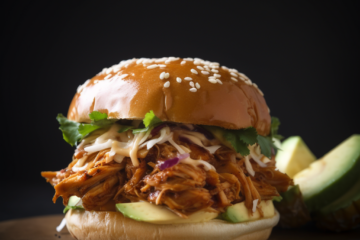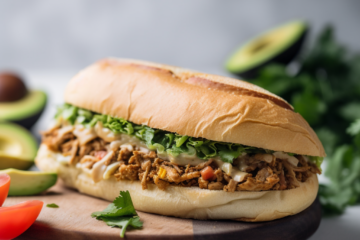Peanut Butter and Jelly Sandwich Recipe: A Timeless Classic
The peanut butter and jelly sandwich holds a special place in many hearts and lunchboxes around the world. Whether you enjoyed it as a child or rediscovering it as an adult, this scrumptious combination of flavors never seems to go out of style. In this blog post, we will explore the origins of this beloved recipe, provide you with a foolproof recipe that serves 4-6 people, and answer some frequently asked questions about this iconic sandwich.
The Origins of the Peanut Butter and Jelly Sandwich
The Peanut Butter and Jelly sandwich, often referred to as PB&J, has a rich history that dates back to the early 20th century. While peanut butter was invented much earlier, around 1890, it was primarily consumed as a paste for an energy source among the upper-class population and was later included in a variety of recipes.
The introduction of jelly and jam to the sandwich can be traced to the rise of affordable, mass-produced spreads in post-World War II America. After the war, the combination of peanut butter and jelly became a symbol of childhood and simplicity—the perfect solution for busy parents looking for a nutritious yet quick meal for their kids. By the 1950s, this delicious duo became a lunchbox staple for children across the United States, cementing its status as a classic American dish.
Ingredients for a Peanut Butter and Jelly Sandwich
Making a peanut butter and jelly sandwich is one of the simplest culinary tasks, but the right ingredients can make all the difference. Below is a table of ingredients needed to serve 4-6 people:
| Ingredient | Quantity |
|---|---|
| Bread (preferably white or whole wheat) | 8 slices |
| Peanut butter (creamy or crunchy) | 1 cup |
| Jelly or jam (any flavor: grape, strawberry, raspberry, etc.) | 1 cup |
| Optional: Butter (for toasting) | 2 tablespoons |
Step-by-Step Directions
Now that you have your ingredients ready, let’s dive into the step-by-step process of making the perfect peanut butter and jelly sandwich.
Step 1: Gather Your Ingredients
Ensure all ingredients and utensils are in one area. You’ll need a butter knife, a spoon for spreading, and a cutting board or plate.
Step 2: Spread the Peanut Butter
Take one slice of bread and scoop out a portion of peanut butter with your butter knife. Spread it evenly across one side of the bread, making sure to cover the entire slice. You can adjust the amount according to your taste, but a generous layer is typically recommended!
Step 3: Spread the Jelly
On another slice of bread, take a scoop of jelly or jam. Use the spoon to drop it onto the slice, then spread it evenly to cover the surface. Like the peanut butter, the amount can be adjusted based on your preference.
Step 4: Assemble Your Sandwich
Carefully place the slice with jelly on top of the slice with peanut butter. Press down lightly to help hold the sandwich together.
Step 5: (Optional) Toast Your Sandwich
If you prefer a toasted sandwich, heat a skillet over medium heat. Spread butter on the outside of both slices of bread and place the sandwich in the skillet. Toast until golden brown on both sides, about 2-3 minutes per side.
Step 6: Cut and Serve
After toasting (if desired), take your sandwich out and let it cool for a moment. Using a sharp knife, cut the sandwich into halves or quarters—whatever you prefer. Serve it alongside your favorite snacks or fruits!
Frequently Asked Questions (FAQ)
Question 1: Can I use alternative nut butters?
Absolutely! While traditional peanut butter is a classic choice, other nut butters like almond, cashew, or sunflower seed butter provide excellent alternatives for those with allergies or different taste preferences.
Question 2: What kind of bread works best?
The best bread for a peanut butter and jelly sandwich is typically white or whole wheat bread. However, you can experiment with other options like gluten-free bread, bagels, or even tortillas for a unique twist!
Question 3: How can I store leftover sandwiches?
If there are leftover peanut butter and jelly sandwiches, wrap them in plastic wrap or store them in an airtight container to maintain freshness. They are best enjoyed within a day or two. However, it’s recommended to avoid storing toasted sandwiches as they may become soggy!
Conclusion
The peanut butter and jelly sandwich is not just a meal; it carries with it nostalgia, joy, and simplicity that navigates generations. By following this recipe, you can whip up this delightful dish in no time and perhaps even pass along your family version to create new memories. So gather your ingredients, make some sandwiches, and enjoy the delightful combination of peanut butter and jelly in every scrumptious bite!


